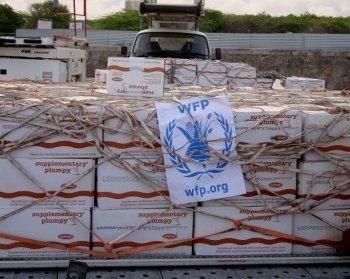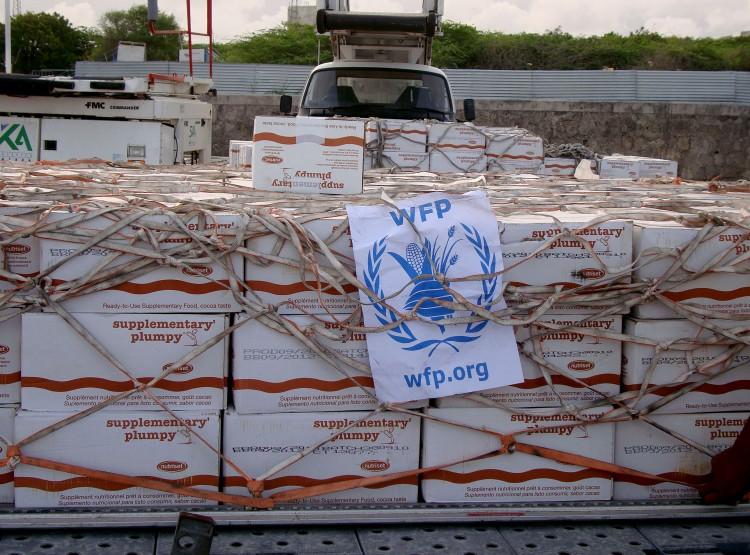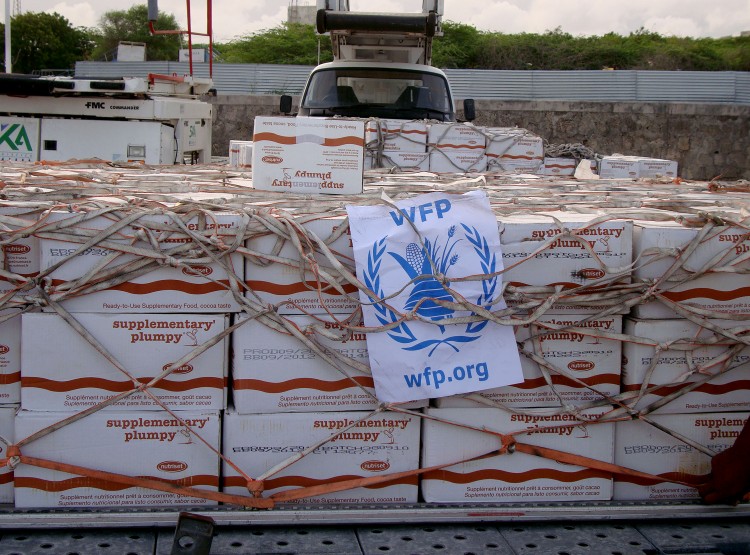Aid Arriving in Somalia, But Not Enough
Luul Sankus and her family are farmers. When Somali rains dried up, they were forced to make the 100-mile trek on foot to Hurufle Village in southern Somalia.

HARD TO REACH SPOTS: The first humanitarian food-aid recently airlifted by the World Food Program awaits distribution after being unloaded at the Aden Abdulle Osman International Airport in Mogadishu, on July 27. Mustafa Abdi/Getty Images
|Updated:





